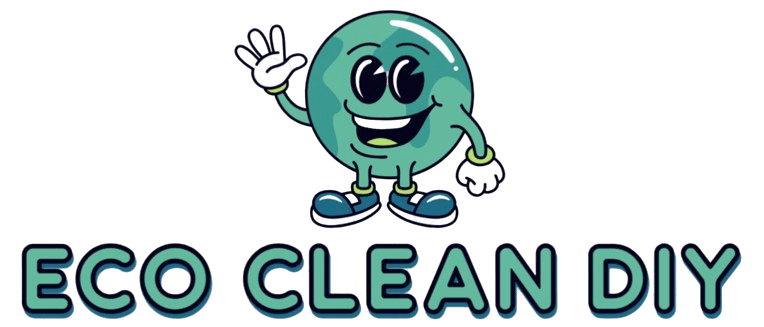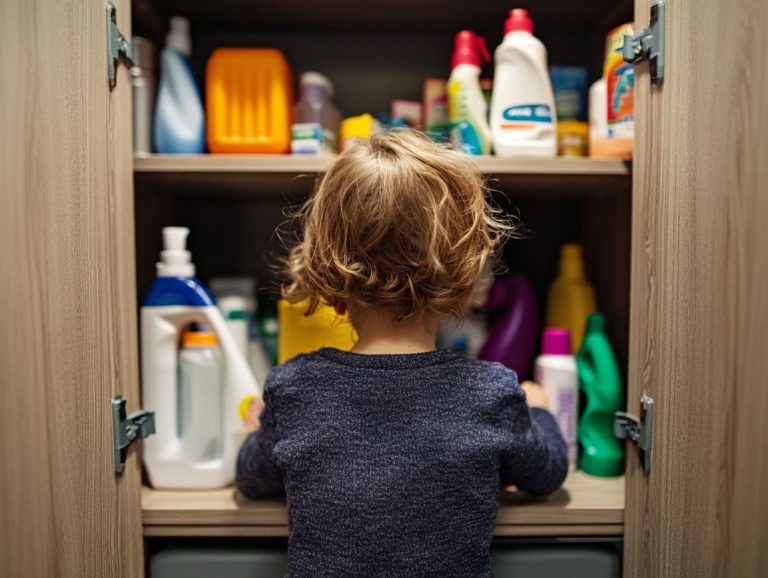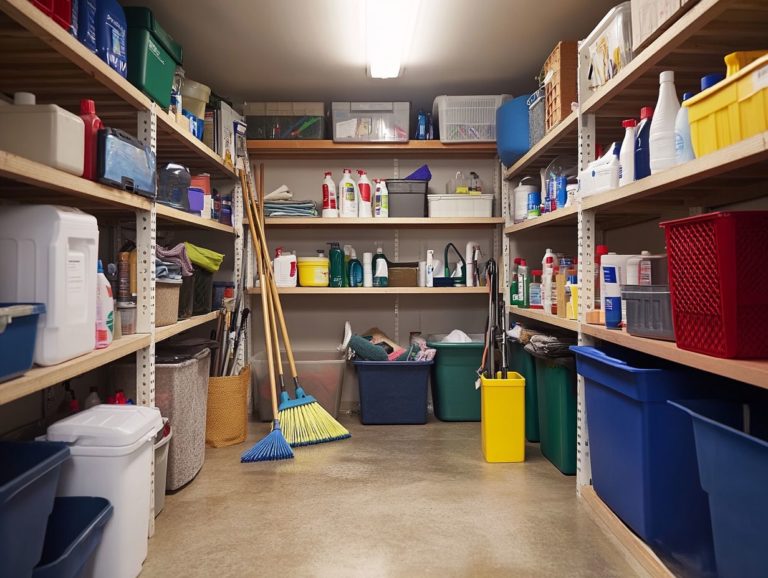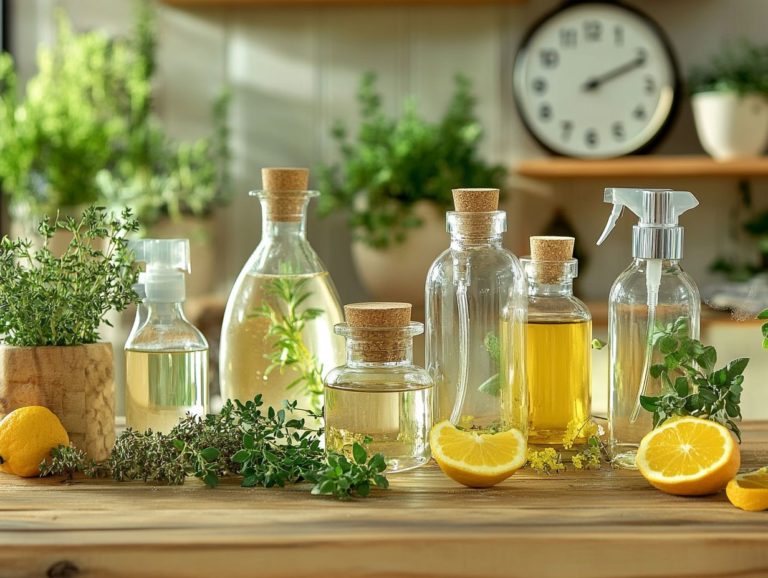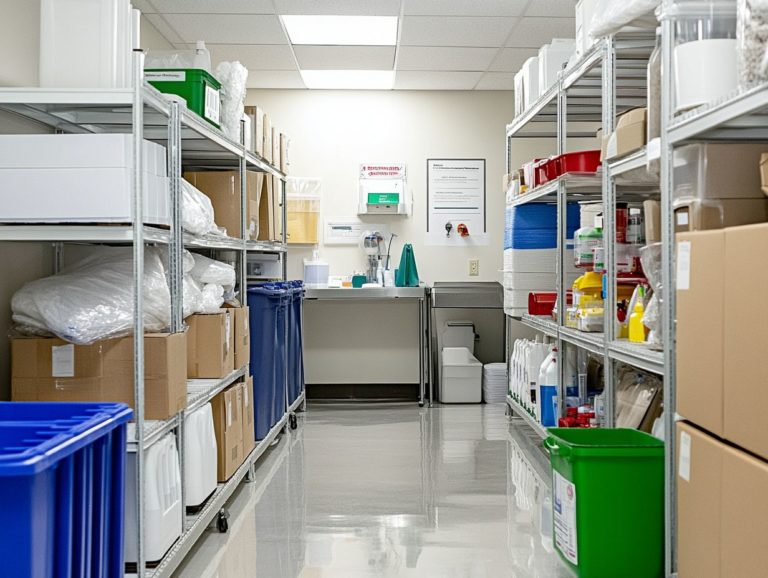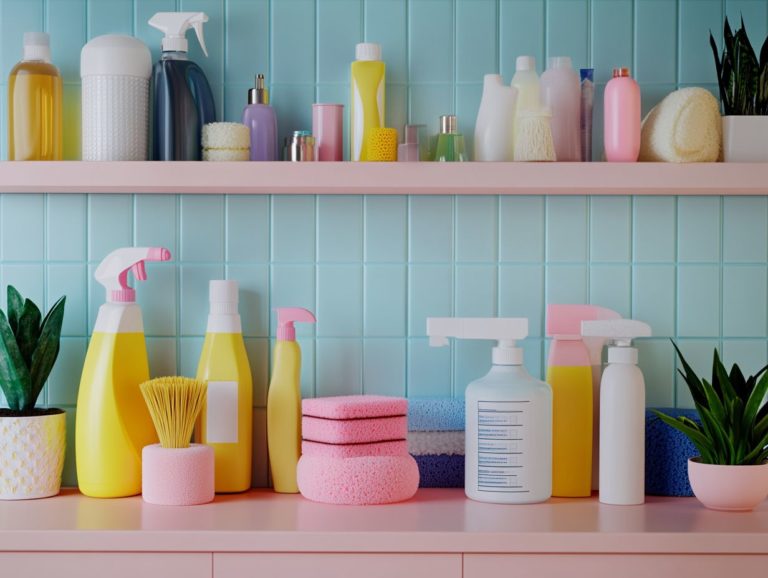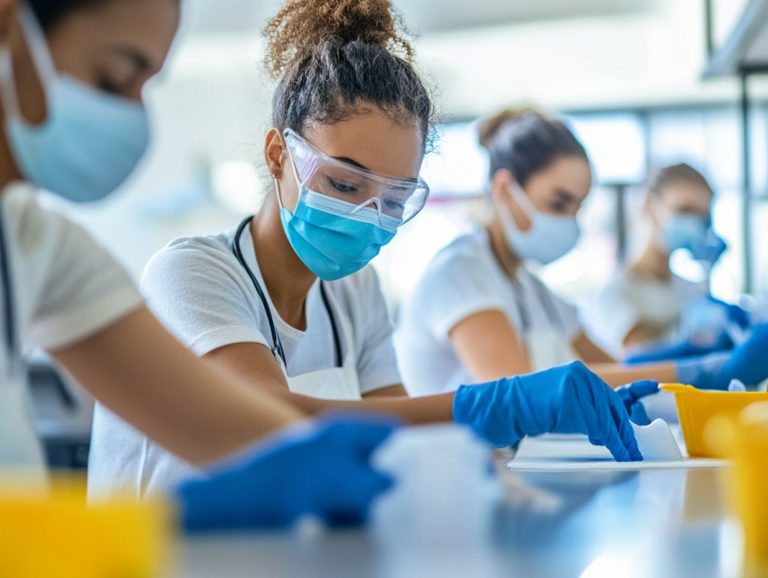How to Educate Others on Cleaner Safety
Cleaner safety is an essential topic that frequently slips under the radar in our everyday lives, especially in educational environments where children’s safety and health are paramount.
In a world filled with a multitude of cleaning products, it’s vital to grasp the risks posed by unsafe cleaners both for health and the environment. This discussion delves into the significance of educating others about cleaner safety, shedding light on potential health hazards and environmental repercussions while providing practical tips for safe practices, especially within a school environment.
Making informed choices contributes to a safer, healthier home and community. This includes understanding and managing cleaning hazards and employing best practices in classroom cleaning.
Contents
- Key Takeaways:
- What is Cleaner Safety?
- What are the Risks of Not Practicing Cleaner Safety?
- How to Educate Others on Cleaner Safety?
- What are Some Tips for Practicing Cleaner Safety?
- 1. Read Labels and Follow Instructions
- 2. Use Protective Gear
- 3. Properly Store and Dispose of Cleaners
- 4. Keep Cleaners Out of Reach of Children and Pets
- 5. Consider Making Your Own Natural Cleaners
- Frequently Asked Questions
- What does cleaner safety involve?
- Why is it important to educate others on cleaner safety?
- How can I educate my family on cleaner safety?
- What are some common mistakes people make when using cleaning products, including conventional cleaners?
- How can I educate my coworkers on cleaner safety and cleaning protocols?
- What are some alternative, eco-friendly cleaning products that I can recommend to others for safer cleaning?
Key Takeaways:
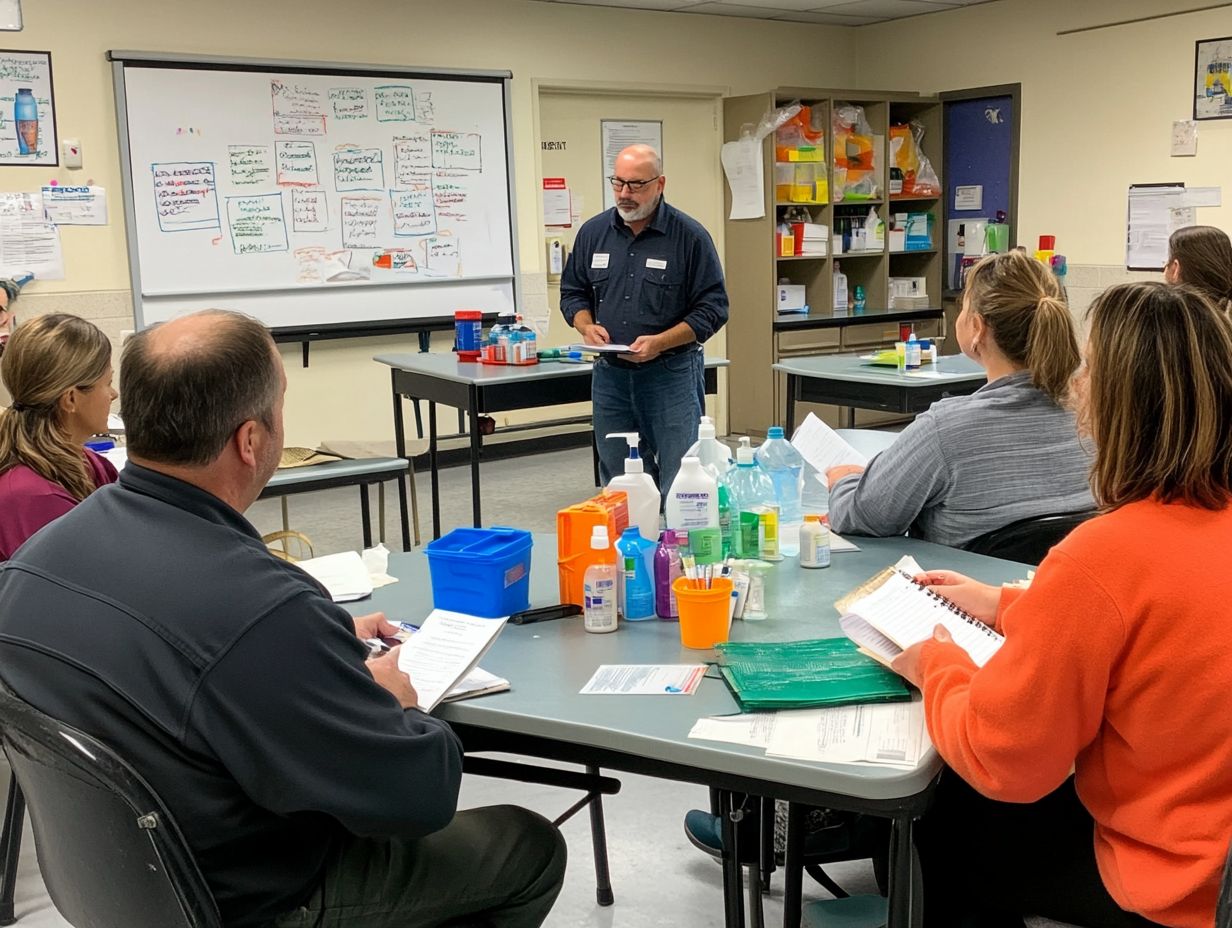
- Cleaner safety is important for both personal health and environmental well-being.
- Not practicing cleaner safety can lead to potential health hazards and environmental impacts, including increased risks of asthma and other respiratory issues.
- Educating others on cleaner safety involves sharing the importance, providing information on safer alternatives, and demonstrating proper usage and handling, particularly in school settings.
What is Cleaner Safety?
Cleaner safety is an essential principle that involves careful practices and protocols surrounding the use and handling of cleaning chemicals, especially in sensitive environments like schools and educational facilities.
Effective school cleaning protocols are critical to maintaining a safe learning environment. By prioritizing health and safety, cleaner safety seeks to reduce the health risks associated with conventional cleaners, which can exacerbate conditions such as asthma and chemical sensitivities.
The significance of choosing safer, eco-friendly cleaning products is crucial! It protects our children and staff, ensuring that effective cleaning procedures are upheld in classrooms and on frequently touched surfaces.
Why is it Important to Educate Others on Cleaner Safety?
Educating yourself and others about cleaning safety is essential. It enables individuals and institutions especially schools to make informed choices regarding the cleaning products and techniques they use, protecting children s health and enhancing overall health awareness within the community.
When schools emphasize the importance of cleaning safety education, they elevate the quality of their environments and cultivate future generations knowledgeable about the effects of chemicals and allergens.
For example, a local school recently rolled out a program where students shared their experiences with asthma and allergies triggered by harsh cleaning agents. This initiative struck a chord, illuminating a tangible connection to health challenges that many families grapple with.
Community workshops have successfully united parents and educators to explore safer alternatives, creating an atmosphere of collaboration. These efforts not only safeguard children s health but also spark a ripple effect, inspiring a cleaner, safer community for everyone involved.
What are the Risks of Not Practicing Cleaner Safety?
Neglecting to implement proper cleaning safety practices can expose you to a range of risks that threaten health, especially among vulnerable groups like children in schools.
These risks encompass exposure to hazardous cleaning chemicals that may worsen respiratory issues such as asthma, contribute to antibiotic resistance, and heighten the chances of infections stemming from insufficient infection control measures.
Proper use of safety gear like gloves and masks and adherence to safety regulations can help mitigate these risks. Prioritizing cleaner safety is not just a choice; it’s a vital responsibility that protects the well-being of those who matter most.
Get involved today! Talk to your school about cleaner safety and make a difference in your community.
What are the Potential Health Hazards of Using Unsafe Cleaners?
The potential health hazards associated with using unsafe cleaners are significant. They can introduce a host of challenges to your well-being, including respiratory issues and chemical sensitivity.
These challenges include respiratory issues like asthma and long-term effects on the immune system. Children are particularly vulnerable to the adverse effects of cleaning chemicals.
Research indicates that exposure to common household cleaners may increase the likelihood of developing asthma by as much as 30%, according to the American Journal of Respiratory and Critical Care Medicine. Many of these cleaners contain harmful chemicals that can evaporate into the air, which contribute to indoor air pollution and pose risks of long-term neurological damage.
Given that children spend considerable time indoors, these risks become even more pronounced. Therefore, heightened vigilance from parents is necessary.
By choosing non-toxic, eco-friendly alternatives, you not only mitigate these health risks but also foster a safer and healthier home environment. Schools that implement these practices often see a reduction in health challenges such as asthma and allergies.
Choosing non-toxic cleaners gives you peace of mind and protects your family!
What are the Environmental Impacts of Unsafe Cleaners?
The environmental impacts of using unsafe cleaners are significant. Many conventional cleaning products release harmful chemicals into the air and waterways, contributing to pollution and negatively affecting local ecosystems.
These pollutants can lead to serious issues such as smog formation, respiratory problems, and the contamination of drinking water sources. The impact of these hazardous chemicals also extends to disrupting aquatic life and ecosystems.
The runoff from households using these conventional products can be detrimental to aquatic life, disrupting entire food chains.
In contrast, eco-friendly cleaners present a sustainable alternative that minimizes harm to the environment. Organizations like the EPA and companies like Branch Basics advocate for safer cleaning solutions.
By opting for these greener choices, you can significantly reduce your overall environmental footprint. This decision benefits both the environment and school budget constraints by supporting sustainable cleaning practices.
These choices contribute to cleaner air and water, fostering healthier communities. Not only will you safeguard local wildlife and plants, but you ll also help create a cleaner planet for future generations.
How to Educate Others on Cleaner Safety?

Educating others about cleaner safety is a nuanced endeavor that demands your active engagement with communities, especially in schools. By fostering health awareness, you play a pivotal role in promoting the use of safer cleaning products and highlighting the benefits of eco-friendly alternatives.
Your educational strategies should illuminate the dangers associated with conventional cleaners while showcasing the numerous advantages of embracing eco-friendly alternatives.
By implementing best practices in cleaning safety, you empower others to make informed choices that prioritize their health and the environment.
Make the switch to safer cleaners today for a healthier home and planet!
1. Start with the Basics: Explain the Importance of Cleaner Safety
Understanding cleaner safety is essential in educational environments. Schools, such as those in the Los Angeles Unified School District, have implemented thorough cleaning guidelines to enhance safety and cleanliness.
Emphasizing proper cleaning practices safeguards children s health and fosters a safe, positive learning atmosphere.
Research shows that schools employing eco-friendly cleaning products can lower the incidence of asthma and allergies among students by as much as 40%. A case study from the University of Massachusetts found that a school that adopted comprehensive cleaning protocols experienced an impressive 50% reduction in student illnesses over the academic year.
Cleaner safety goes beyond merely selecting the right products; it also entails training staff on the effective and safe handling of cleaning agents while educating students about essential hygiene practices. Comprehensive staff training and consistent cleaning inventory checks are crucial in maintaining the effectiveness of cleaning protocols.
By nurturing a culture of health awareness, educational institutions can significantly decrease absenteeism and create an environment where children can excel both academically and socially.
Sharing real-life examples of the dangers posed by unsafe cleaners is a compelling way to engage your community and illustrate the tangible consequences of neglecting cleaner safety. Personal stories from parents and educators can be particularly impactful, encouraging community engagement.
Highlighting personal stories that resonate with the experiences of those around you creates a relatable narrative that captures attention.
When you present testimonials from individuals who have faced adverse reactions or health issues due to hazardous cleaning products, you foster a deeper understanding of the repercussions that come with such choices. For instance, sharing experiences of children who have developed asthma due to unsafe cleaners drives home the importance of safer alternatives.
These narratives do more than just inform; they inspire action, prompting people to rethink their cleaning habits and consider safer alternatives.
As community members hear about their neighbors’ experiences, conversations begin to flourish, leading to heightened awareness. Showcasing case studies that highlight the positive outcomes of using eco-friendly cleaners can further motivate others to embrace this movement toward safer, healthier living environments, establishing a collective commitment to well-being.
3. Provide Information on Safer Alternatives
Explore safer alternatives to conventional cleaners! These options are vital for promoting healthier cleaning practices. Decision-makers in school districts must consider these alternatives to ensure children’s safety and environmental sustainability.
You ll discover various eco-friendly cleaners that not only clean effectively but also offer significant health benefits for users in schools and other facilities.
These alternatives often feature plant-based ingredients and natural essential oils, striking a perfect balance between cleanliness and safety by eliminating harmful chemicals that could irritate the respiratory system or skin.
As an educator or facility manager, products like vinegar, baking soda, and citrus-based solutions are surprisingly effective, tackling tough stains and odors without any unpleasant side effects. These eco-friendly cleaners provide significant health benefits by reducing exposure to hazardous chemicals and supporting children s health.
Embrace these eco-friendly options now and transform educational environments into cleaner spaces that also contribute to the well-being of both students and staff, ultimately reducing absenteeism linked to chemical sensitivities and asthma. Making these choices not only fosters healthier surroundings but also enhances the overall learning atmosphere and school environment.
4. Demonstrate Proper Usage and Handling of Cleaners
Demonstrating the proper usage and handling of cleaners is crucial for ensuring your safety while cleaning. It equips you with the knowledge and skills needed to effectively use safe cleaners while adhering to best practices and cleaning protocols.
This training not only enhances your ability to avoid accidents but also helps foster a culture of safety within educational environments. When schools prioritize personal protective equipment (PPE) training and establish safe cleaning procedures, they create a safer atmosphere for everyone staff and students alike. It also addresses cleaning challenges and ensures the effectiveness of cleaning practices.
A systematic approach to cleaning involves several critical steps:
- First, always read the labels on cleaning products for safety instructions.
- Second, don appropriate PPE, such as gloves and masks, when necessary.
- Third, ensure proper ventilation during the cleaning process.
Training sessions should reinforce the importance of distinguishing between various types of cleaners and instruct on safe storage methods to prevent harmful chemical reactions. By building this understanding, schools can significantly mitigate the risks associated with hazardous cleaning agents, including those that could lead to asthma benefits and reduce infection control issues.
5. Encourage Others to Spread the Word
Encouraging others to spread the word about cleaning safety not only fosters community engagement but also amplifies health awareness and promotes the adoption of effective cleaning safety tips in various educational and public spaces.
By organizing workshops and community meetings, you can share knowledge and experiences regarding safe cleaning practices, creating a collaborative environment that underscores the significance of cleanliness. Engaging local experts, such as health professionals and cleaning specialists, to lead discussions can deepen understanding and dispel common misconceptions.
Establishing peer-led initiatives where seasoned community members mentor others in safety protocols ensures that everyone has access to reliable information. This collective effort not only enhances individual awareness but also cultivates a culture of cleanliness, ultimately leading to safer environments for students and staff alike.
What are Some Tips for Practicing Cleaner Safety?
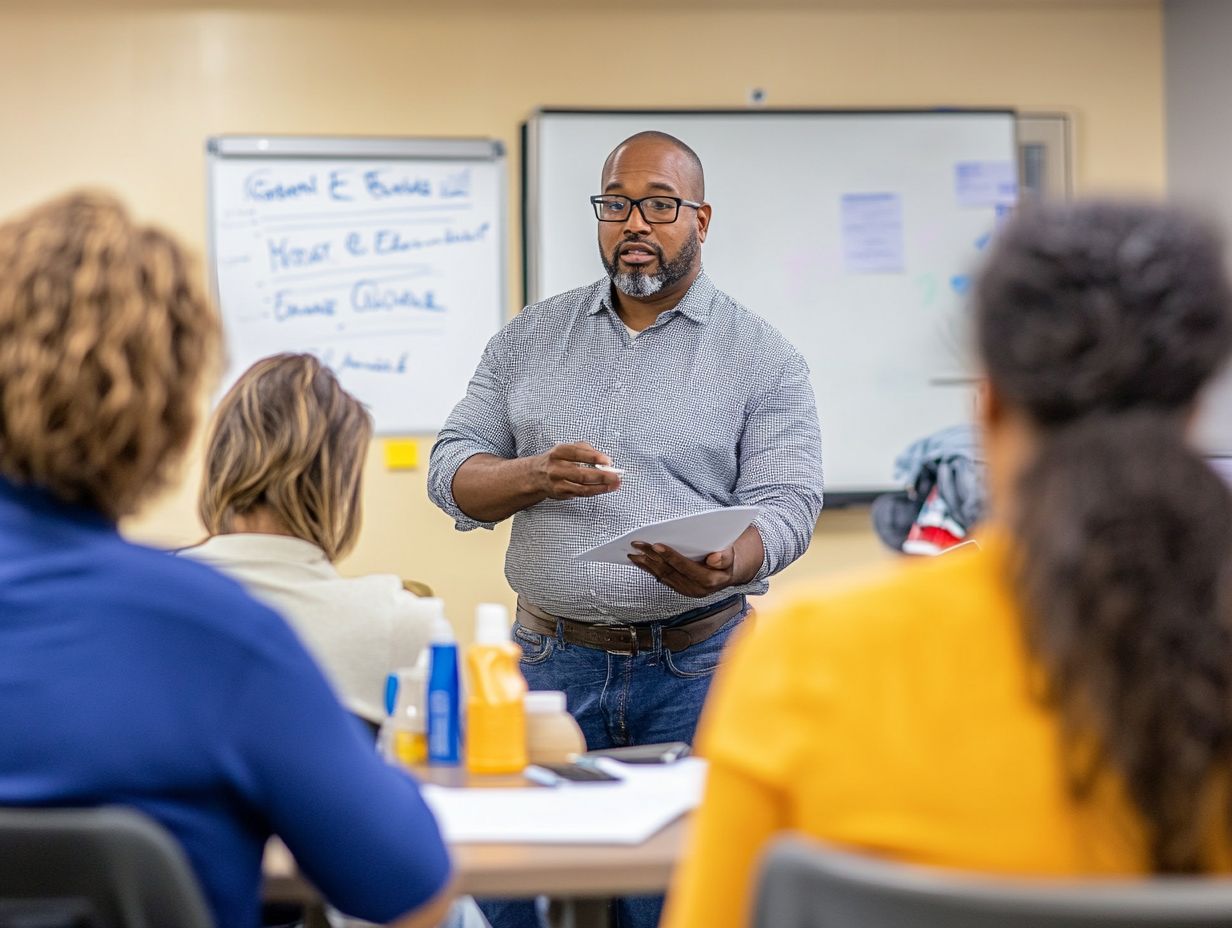
Engaging in cleaner safety practices entails a collection of actionable strategies that can greatly elevate health awareness and foster safer cleaning routines in schools and various environments.
By adhering to these cleaning safety tips, you can effectively reduce the risks linked to hazardous cleaning chemicals and play an integral role in cultivating a healthier space for everyone involved.
1. Read Labels and Follow Instructions
Reading labels and following instructions on cleaning products is essential for ensuring your safety and minimizing health risks associated with improper use of cleaning chemicals.
This practice not only helps you identify any potential allergens or harmful ingredients but also equips you with critical information on safe handling and application methods. Understanding safety symbols can alert you to the inherent dangers of certain substances, guiding you to use protective gear when necessary.
By taking the time to thoroughly review the label, you can effectively prevent accidents such as chemical burns or inhalation of toxic fumes that may occur from misuse. Proper label comprehension ultimately enhances the effectiveness of your cleaning practices, ensuring that surfaces are treated correctly for maximum cleanliness and hygiene. This also helps in classroom cleaning, ensuring a healthier space for learning.
2. Use Protective Gear
Wearing protective gear, such as gloves and masks, is essential for maintaining safety while cleaning. This gear offers vital protection against harmful cleaning chemicals, safeguarding your health and ensuring a secure cleaning process. It’s important for infection control. It also helps manage health challenges linked to harsh chemicals.
In addition to gloves and masks, using goggles and aprons can greatly reduce the risk of injury or irritation from splashes or spills, especially when dealing with strong solvents or disinfectants. It’s crucial for schools to prioritize training on personal protective equipment for both staff and students! This education cultivates a culture of safety and enables individuals to make informed decisions about best practices in their cleaning routines.
By integrating safe, non-toxic cleaners with the right protective gear, you enhance security and minimize harmful chemical exposure, creating a safer cleaning environment for everyone involved. This practice also helps reduce the risk of chemical sensitivity.
3. Properly Store and Dispose of Cleaners
Store and dispose of cleaning products correctly to keep yourself and the environment safe! Improper handling can easily lead to leaks, spills, or contamination of your surroundings. In a school environment, this practice is especially important to avoid health risks.
To mitigate these risks, adhere to local regulations governing the storage and disposal of chemical substances (any materials used for cleaning). This means positioning products out of reach of children and pets, ensuring that containers are tightly sealed, and regularly checking for expiration dates. Managing your cleaning inventory helps maintain safe storage practices.
Many jurisdictions offer designated drop-off sites for hazardous waste, helping you prevent accidents and protect natural ecosystems.
Choose eco-friendly cleaning products today to reduce hazards and protect our planet! Making informed choices allows you to create cleaner living spaces while safeguarding public health and reducing your carbon footprint. This practice supports a more sustainable lifestyle and aligns with green cleaning initiatives.
4. Keep Cleaners Out of Reach of Children and Pets
Keeping cleaning products out of reach from children and pets is essential for ensuring cleaning safety. This significantly minimizes the risk of accidental exposure and the health challenges that come with hazardous cleaning chemicals.
This practice is not just important in homes; it becomes even more critical in schools, where many children are present. Educating families and school staff about the vital importance of secure storage can help cultivate a culture of safety. Involving decision makers in the school district, such as the PTA and Janitorial Manager, allows for more effective policy implementation.
Accidental ingestion of these substances can lead to serious health risks, including poisoning, respiratory issues, or skin irritations. Thus, implementing safety measures such as locked cabinets and clear labeling of products is crucial.
Regular training sessions for staff, along with informative resources for parents, can greatly enhance awareness and ensure that everyone understands the correct protocols for responsibly handling and storing cleaning supplies. This approach helps in managing cleaning hazards and ensures children s safety.
5. Consider Making Your Own Natural Cleaners
Considering the option of making your own natural cleaners can truly enhance your cleaning routine, offering effective solutions while promoting health benefits. This practice minimizes your exposure to harmful chemicals often found in commercial products.
By reducing your reliance on these products, you can also help avoid nasty chemical allergies and support healthier cleaning products.
With just a few simple ingredients like vinegar, baking soda, and essential oils, you can effortlessly whip up powerful and safe cleaning mixtures right in the comfort of your home. Often, these homemade alternatives are more budget-friendly than their store-bought counterparts, making them an economical choice for families and individuals alike.
This can be particularly beneficial for schools facing budget constraints, offering a cost-effective, safer cleaning solution.
By choosing to craft your own cleaners, you significantly reduce the carbon footprint linked to packaging and transportation. This aligns your habits with a more sustainable lifestyle.
This shift not only cultivates a healthier living environment but also reflects a conscious effort to protect our planet for future generations.
Frequently Asked Questions
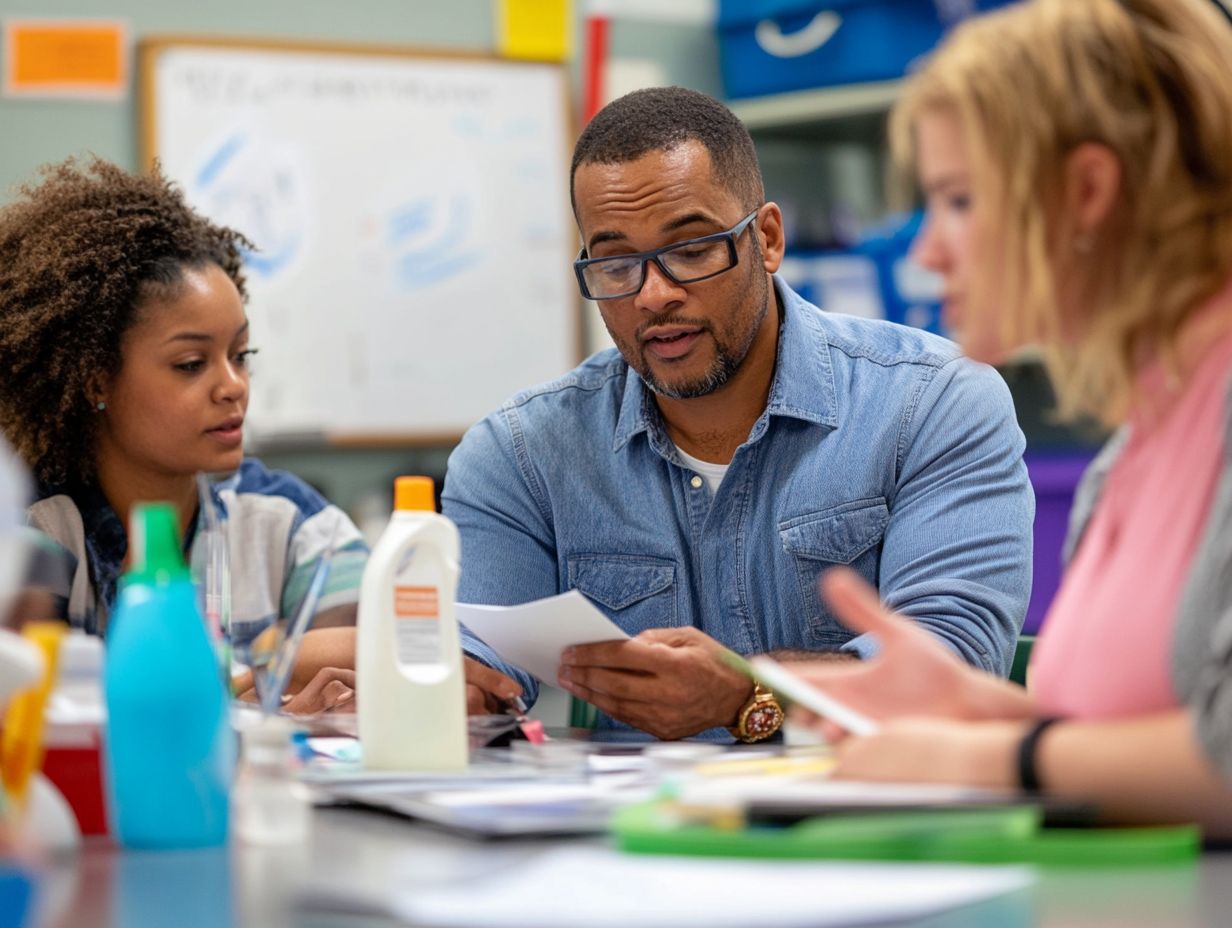
What does cleaner safety involve?
Cleaner safety involves following proper procedures and using appropriate protective equipment while handling cleaning products. This ensures the safety and health of individuals and the environment.
It also includes understanding safety regulations and the potential health risks associated with cleaning chemicals.
Why is it important to educate others on cleaner safety?
By educating others on cleaner safety, we can prevent accidents, injuries, and health hazards caused by improper use of cleaning products. It also promotes a healthier and more environmentally-friendly approach to cleaning.
Sharing personal stories and experiences can greatly enhance the understanding and impact of these safety measures.
How can I educate my family on cleaner safety?
Educating your family on cleaner safety can be achieved through informative discussions, practical demonstrations, and by sharing reliable resources. Emphasizing the importance of using healthier cleaning products and adhering to safe cleaning procedures helps ensure a safe living environment.
You can start by explaining the potential risks and hazards associated with common household cleaning products. Focus on cleaning chemicals that can pose serious health challenges, such as asthma and allergies to chemicals.
Teach them how to properly read labels and use Personal Protective Equipment (PPE), which includes items like gloves and masks that help protect you while cleaning. Demonstrate safe handling and storage practices.
What are some common mistakes people make when using cleaning products, including conventional cleaners?
Some common mistakes include mixing different products, using too much product, not following safety regulations, and not diluting concentrated cleaners properly. These mistakes can result in toxic fumes, chemical burns, hazardous chemical exposure, and other health hazards.
How can I educate my coworkers on cleaner safety and cleaning protocols?
You can organize a training session or workshop to discuss proper handling, cleaning procedures, and storage of cleaning products. Include information on the importance of PPE training and risk assessment.
You can also post informational posters, share personal stories, or send out regular reminders to promote a safe and healthy work environment, particularly in a school setting.
What are some alternative, eco-friendly cleaning products that I can recommend to others for safer cleaning?
There are many eco-friendly options available such as vinegar, baking soda, and essential oils, which are effective and safer for both people and the environment.
Look for cleaning products with eco-friendly certifications and labels, such as those recommended by the EPA. Share experiences from schools like the Los Angeles Unified School District.
Utilize resources from companies like Branch Basics, co-founded by Allison Evans, for healthier cleaning products.
Start today by teaching your family about safer cleaning practices!
